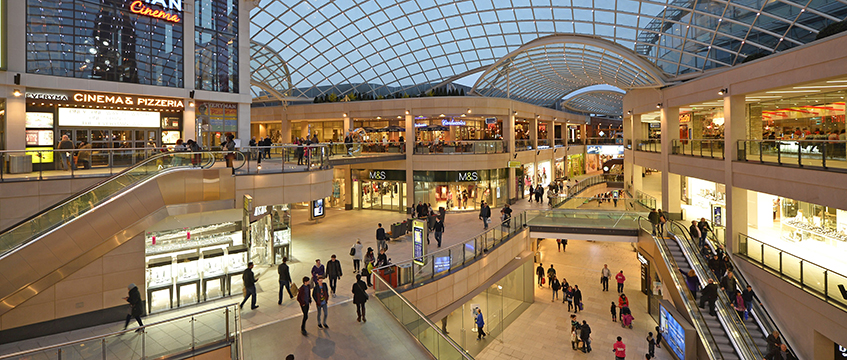COMMENT As 2023 comes to an end, it is important to look at recent trends that will shape how retailers fare in 2024. While it is too early to predict how Christmas will pan out for UK retail – with 2022 surprising many with positive sales figures for some of the UK’s major high-street multiples – Black Friday, which has become a key Q4 date for many, seems to have failed to resonate well with shoppers this year.
Data from Barclays shows that transaction volumes on Black Friday were down year-on-year. While retailers appear to be more savvy with their discounting, offering significantly less deep discounts versus last year, according to Which?, it seems shoppers have been equally savvy, preferring to limit their spending, and potentially waiting for even deeper discounts to come as we move toward Christmas Day.
Black Friday is fundamentally margin dilutive and, at a time when retailers need to be selling product as close to full price as possible given rising costs, it is understandable that retailers haven’t discounted as deeply as they did in prior years. However, rising stock levels given lower demand may ultimately force them to do so. Retailers will be banking on strong Christmas sales to see them through to the end of the quarter. As with Christmas 2022, I expect in-store sales to outperform online sales, with retailers with a strong omni-channel offer (and, of course, Primark) the true winners.
Moving into 2024, as residential rents continue to increase, more fixed-rate mortgages running out and inflation staying relatively high, the first half of 2024 at least will likely see lower consumer demand and a concurrent impact on retail sales and margins.
There are two key areas from a retail property perspective worth focusing on in any discussion about 2024 – a higher business rates burden for retailers, and the increased movement toward retail parks among mass-market multiples.
Business rates ‘double whammy’
The changes to business rates set out in this year’s Autumn Statement will help smaller businesses, but will do little to lessen the burden on multiple retailers – which represent the vast majority of retailers in the UK. While the small business multiplier will be frozen and retailers will be provided with 75% rates relief up to a cap of £110,000 per business, this doesn’t really help retailers with more than a handful of sites.
London retailers face a “double whammy” of rising rates given the bulk of them are multiples, and the fact that business rates in the capital are significantly higher than the rest of the UK, with a number of retailers exceeding the £110,000 cap from one site alone. In the context of continued high inflation and rising costs across their supply chain, many retailers will have been hoping for more assistance from the government – perhaps freezing the multiplier for all retailers instead of just small businesses for example.
Higher business rates come on top of an increase in the energy price cap, and a significant hike in the national minimum wage next year. These increased costs may impact retailers in new store investment or acquisition decisions, and force more active estate management, including potential store closures.
High-street reinvention
Retail parks proved to be a hugely resilient asset class during Covid, with large stores positioned close to residential areas offering free parking. Their popularity has continued post-Covid for similar reasons.
For retailers, they provide modern, purpose-built accommodation and a generally affluent, family-oriented shopper. This is why more comparison goods retailers are keen to trade on retail parks. For the likes of Next and M&S, which have traded at retail parks for some time, those stores are among their best performing. With a broadening of the offer away from just bulky goods, and more food and beverage operators seeking to trade on parks, they are increasingly providing a real alternative to high streets.
The challenge for high streets is to reinvent themselves in light of this, providing more of a community hub offering a mix of uses to visitors. They need to provide something that retail parks can’t, and that often includes a mix of retail, F&B, leisure, offices, residential and health and wellness.
There is a place for both to co-exist in today’s retail world. However, creative solutions are needed to maintain high-street health and to mitigate the structural vacancy we have seen following various high-profile retail business failures over the past few years, such as Debenhams, Arcadia and, more recently, Wilko. Retail parks are here to stay and park performance in 2024 will continue to improve relative to other asset classes as the tenant mix in such parks continues to broaden and strengthen.
Rightsizing store portfolios
While inflation has abated somewhat globally, it remains relatively high in the UK, with concurrent high interest rates impacting consumer demand, and costs continuing to rise for retailers in 2024. Retailers are battle-hardened after Covid and the better-managed ones, such as Next, Primark and Inditex, continue to outperform the wider sector.
For the rest, careful cost control is key across the value chain. This includes actively managing the store portfolio to ensure stores are the right size, in the right place. For some, this will include continued movement towards retail parks, although locations in the stronger, higher-footfall high streets and malls will continue to be important for brands in order to drive “halo” to their other distribution channels.
Fewer, better stores will be the focus for many retailers, with stores often segmented into “brand builders” and “profit makers” as a result. 2024 will be a challenging year for the sector for sure, but the best retailers will continue to thrive.
Jonathan De Mello is founder and chief executive of JDM Retail











